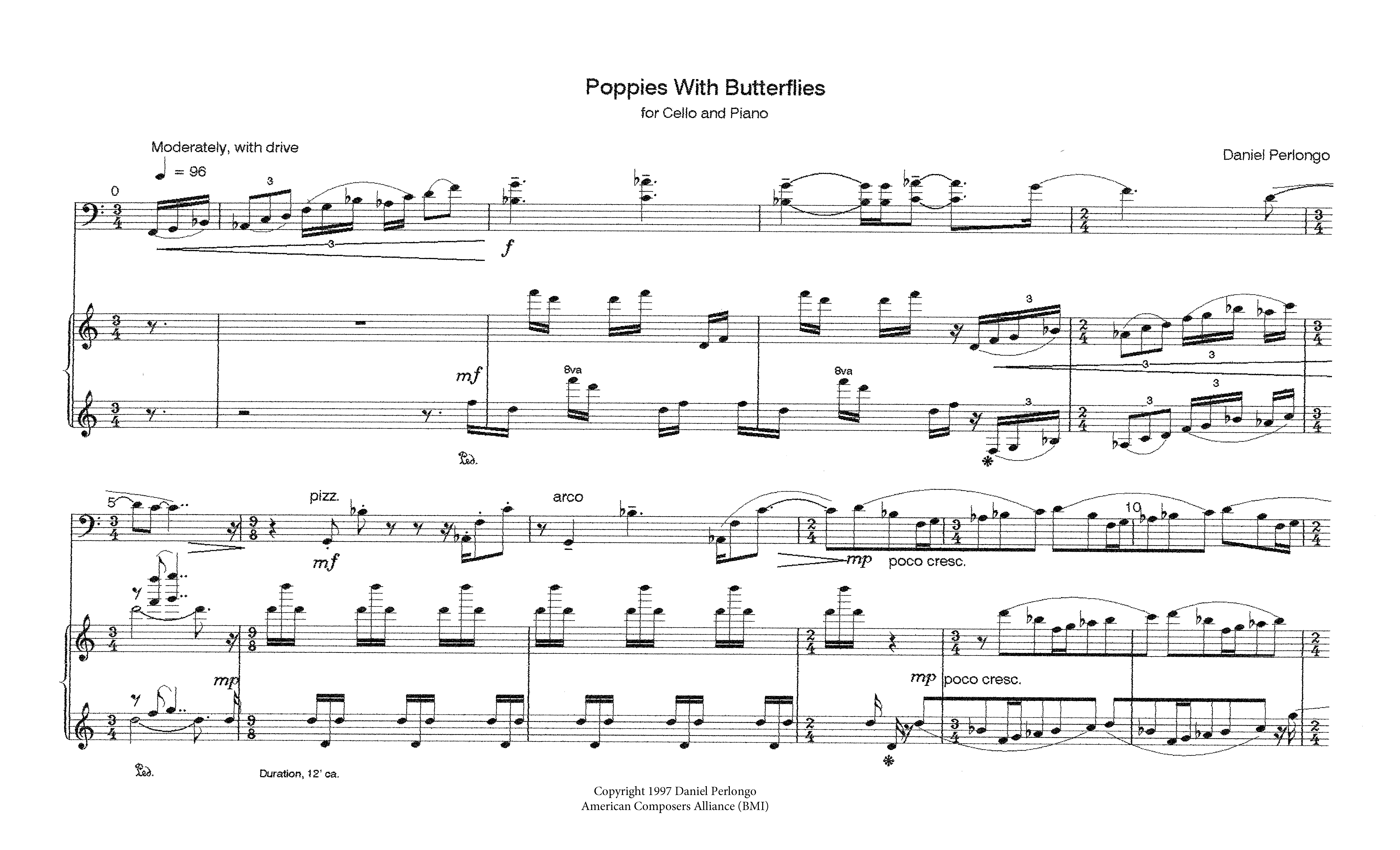Quick View
-
-
Files & Media
-
-
Detail
The title Poppies with Butterflies refers to a Vincent Van Gogh painting of the same name painted around 1890. The color, tone, mood and spirit of the painting influenced the composition. And a basic shape, like that of the closed poppies drooping from their hooked stems, forms a pathway through which the music makes reference to Ferruccio Busoni's Second Sonata for violin and piano, Op. 36a, composed in 1898. This shape, taken from an accompaniment pattern in the Busoni Sonata, consists of two ascending, followed by three descending intervals (i.e. 3 tones up and 4 down), and is the basis of a motive that permeates the entire work. It is first heard in the accompaniment of the first verse, and later at the arrival of the verse at its climax, where the piano magnifies this shape in pedaled chords over the cello pizzicato. The pitch material is based on a 12 tone series harmonized by 7 chords from which 7 modes are derived. Segments of the series stream through the work like organic ribbons of light.
The composition unfolds in 7 sections: A1 (a), B, A2 (a,a,a), C, A3 (a,a), D, A4 (a). In the "A" sections, Moderately, with drive, a verse (a) recurs 7 times. The shapes, gestures and rhythms are the same in each repetition, but a different mode is used to create a different color and harmonic framework. In the (B) Andante, (C) Piú Mosso, and (D) Adagio, the modes are heard in close proximity, expressed as a progression of 7 harmonies. This tightening, or diminution of the harmonic rhythm provides the basis for these contrasting sections.
The accompaniment patterns of the contrasting sections are based on variations of the basic shape. In the (D) Adagio, the accompaniment most closely resembles the Busoni sample. It is here, as the cello sings a line generated from the materials, colors and moods of the present work, over the accompaniment (alla Busoni) in the piano, that the present and the past meet. This leads to the piano making the only direct quote from the Busoni as the cello sustains a Bb pedal, and it is as if for a moment the past comes alive. Following a brief cello cadenza, acting as a summation of, and comment on the work's entire process and progress, is the last verse, the finale, with its grander more majestic setting.
-
-
-
-


-